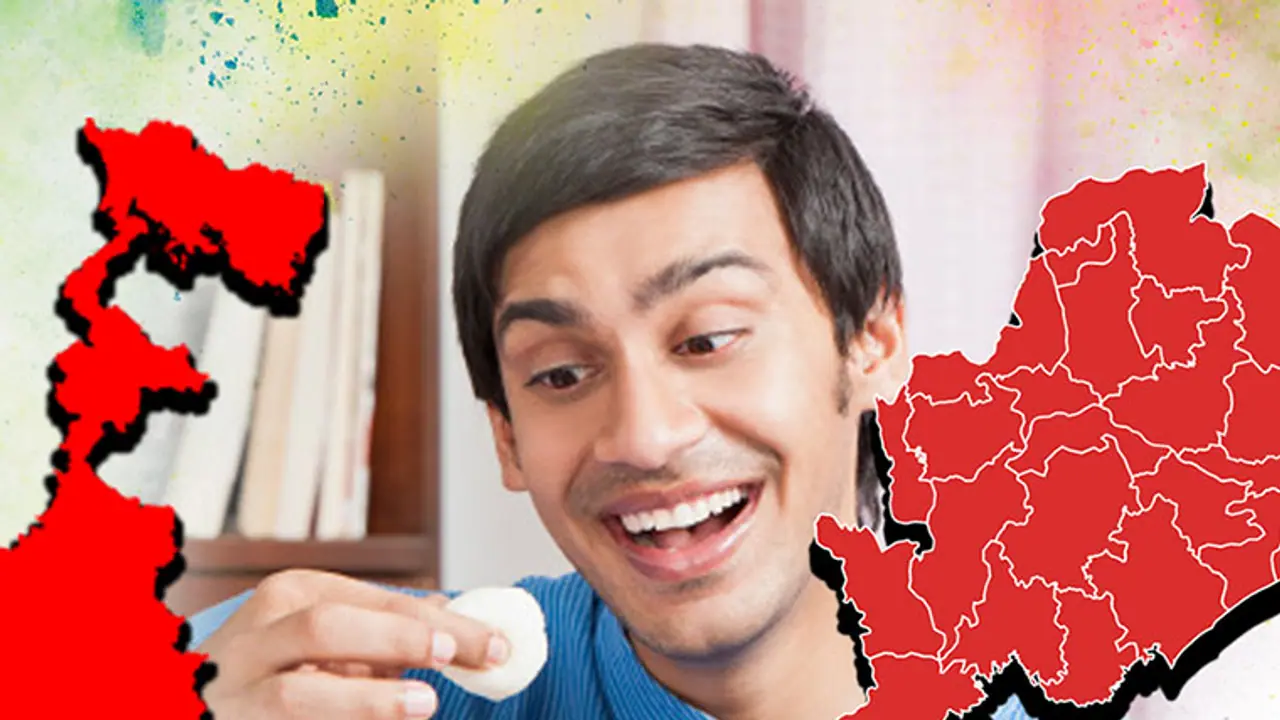West Bengal wins the GI tag over Rasgulla, after months of fighting a war against its sister state Odisha. A geographical indication is a sign used on products that have a specific geographical origin and possess qualities or a reputation that are due to that origin. The tag provides an assurance of quality and uniqueness, which are attributable to the place of origin.
It is not easy to savour a mouthfull of Rasgulla (or a Bangali's Rosogolla) and think of the GI tag all at the same time. Afterall, the cerebrum fails to understand why a GI tag is necessary for a delicacy like the Rosogolla in the first place. As news of Bengal winning the GI tag for the sweet something blared on the television, I kept munching on, laughing at my own reaction. Instead of being a Bengali and being happy about the development, I was at ease with myself gorging on the syruppy sweet. Ah bliss!

However my celebral cortex sprung into action when there were none of the Rosogollas left and I understood the importance of the war between Odisha and West Bengal. However, trust me, when I say that it had nothing to do with the regional war that the sister states have indulged themselves in over a food item that both savour. I mean, does it really make sense, especially in an Indian diaspora where cultures, food habits and languages mingle? It's almost like waging a war over Rice and its origins even though we know it is the staple food for all Indians. Down South, who decides the origin of Sambhar, masala dosa or plain Dosa. As far as I am concerned, I just know the varieties I have enjoyed having and cherishing.
Certainly, the common man does not bother, especially when there are more hungry mouths that are waiting to be fed than the supply of food grains in the country. On second thoughts, we do not have the time to think beyond the realms of inflation, unemployment, job losses and demonetisation. According to a Times of India report, with over 21% children in India suffering from Malnutrition, the country has been ranked 100th among 119 developing countries on the Global Hunger Index (GHI). Incidentally, we are even behind North Korea, Bangladesh and Nepal!
And here we are fighting over the food we get. Nevertheless, my curiosity on people's knowledge of the GI tag got the better of me and I couldn't stop myself from poking my household help about it. "Who does Rosogolla belong to?", I asked Sangeeta. Belonging to a very poor family and working at over 10 households as a maid servant to feed her family of 12, her poker face gave me the answer. She, however, counter-questioned cheekily, "Does that reduce its price?"
Point noted! The poor goes by the price of the things it consumes and these discussions are nothing but pure unaffordable luxury for him. Sangeeta's next question jolted me back to my senses. "Didi, what is this GI tag?", she asked.
Never gave it a serious thought, I pondered. After some research, I came to a rather complicated answer. As defined by the World Intellectual Property Organisation, "A geographical indication is a sign used on products that have a specific geographical origin and possess qualities or a reputation that are due to that origin."
To be specific, the tag provides an assurance of quality and uniqueness, which are attributable to the place of origin. These tags protect manufacturers who produce these agricultural, natural or a manufactured cultural product. They also get a premium pricing for the product for the domestic and the international markets.
So, that answers both the questions by Sangeeta. The price of Rosogolla may indeed go up, to the chagrin of the sweet lovers in both the states and to the indifference of people like Sangeeta.
As I set out to check the market price of the product now, another thought struck me- war waged, battle won, but can India really afford to raise a toast to such a debate when it has things like poverty, malnutrition, women empowerment to bother about? Does this really fit the mettle when the country is already divided on the basis of language, caste, class and economy? Perhaps not or maybe the middle-class Indian is so not bothered about anything outside his requirements of Roti, Kapda and Makaan?
